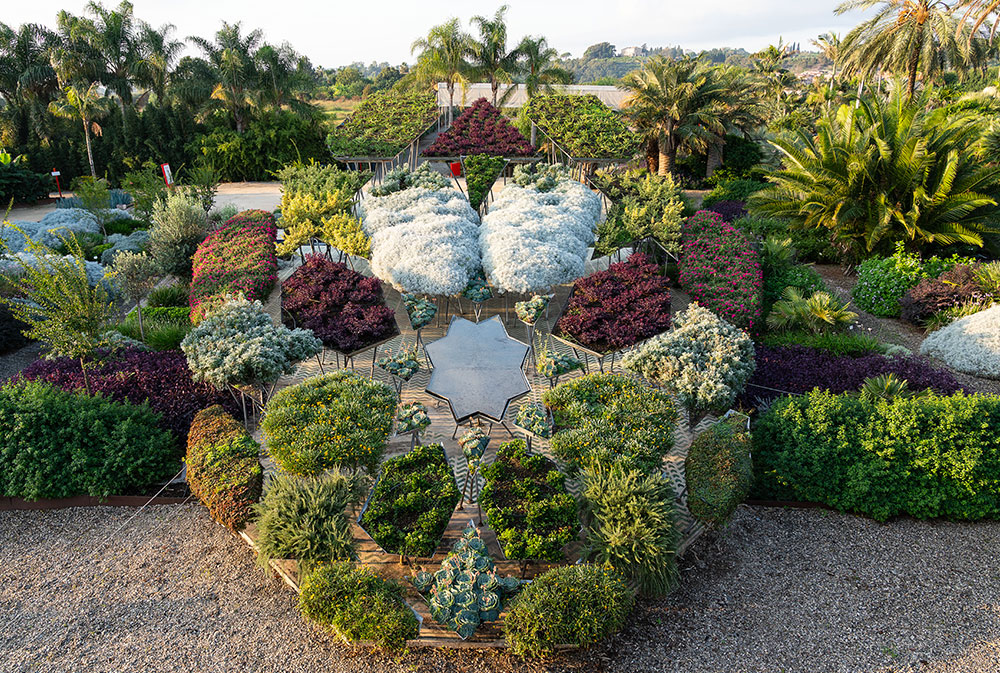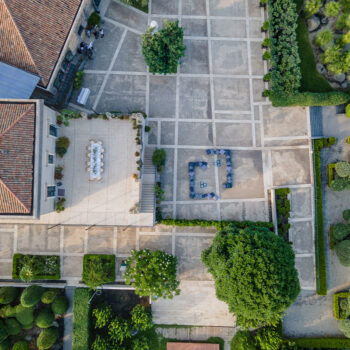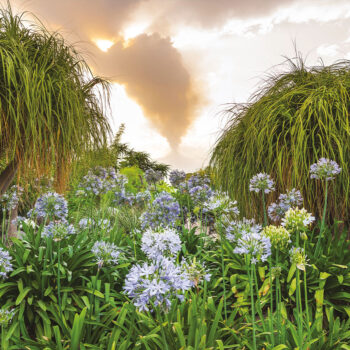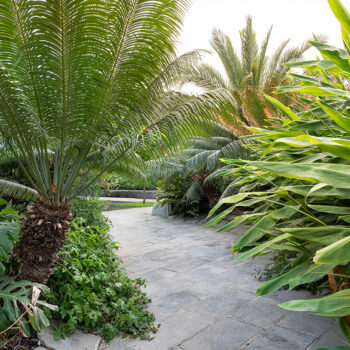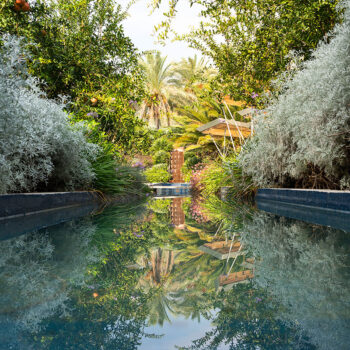Empedocle’s Dream, an environmental installation by Master Emilio Isgrò, will welcome you at the entrance. From here, a walk leads to several terraces, home to a wealth of botanical species by family.
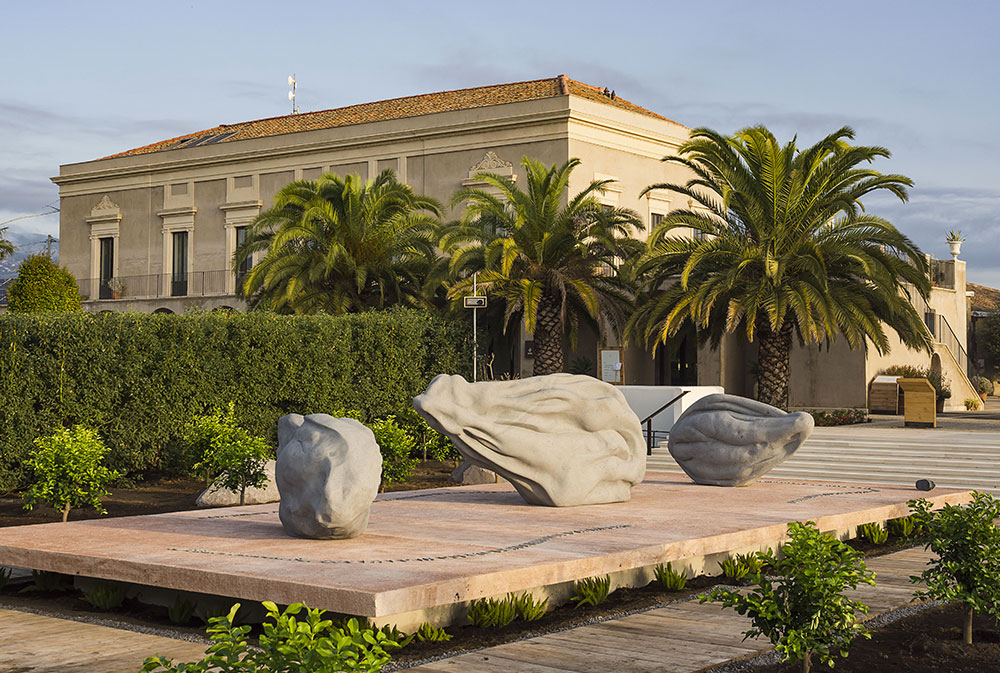
Walk through the Xanthorrhoeaceae, the Asparagaceae and the Liliaceae, as well as several species of Aloe and Dasylirion: the terrace has a native Australian plant, the Xanthorrhoea johnsonii and the Moringa oleifera originally from Asia, considered a super-food of the future.
Further along the terrace of Cactaceae and Succulents, where tall Trichocereus pasacana stand high next to groups of Agave and Echinocactus grusonii. The Terrace of Diamonds owes its name to the rarity of the species present, such as the Zamia furfuracea, the Macrozamia moorei and specimens of Encephalartos, a genus of fossil cycads from the Zamiaceae family. Amity’s Terrace will welcome you at the bottom of the slope offering the charm of an oasis in the desert: its ten pointed start fountain lies in the shade of splendid specimens of Bismarckia nobilis, Howea forsteriana, Archontophoenix, Alexandrae, Jubaea chilensis and Arenga engleri. Alongside, large trees with huge trunks, such as a Brachychiton rupestris and Ceiba chodatii, of the Malvaceae family with a rounded barrel shaped trunk which earned them their nickname the “bottle tree of Queensland”.

Take a few more steps into in the citrus fruit terrace inaugurated in October 2022. The Terrace sports a number of eighteenth-century varieties belonging to the project for the preservation of ancient citrus fruits created in collaboration with the Italian national trust FAI – The Garden of the Kolymbethra (Giardino della Kolymbethra) and the Botanical Garden of the Museum System of the University of Palermo. In the midst of the citrus fruit grove artist Adrian Paci’s work: a 140 square metre mosaic in marble and lava stone aka Compito #1.

Our gardens transcend the notion of time and turn into a symbol. They are the permanent gardens, a memory of the past looking to dialogue with the future. They are traditional places for visitors but change over the seasons and months, for ever leaving visitors mesmerized.
